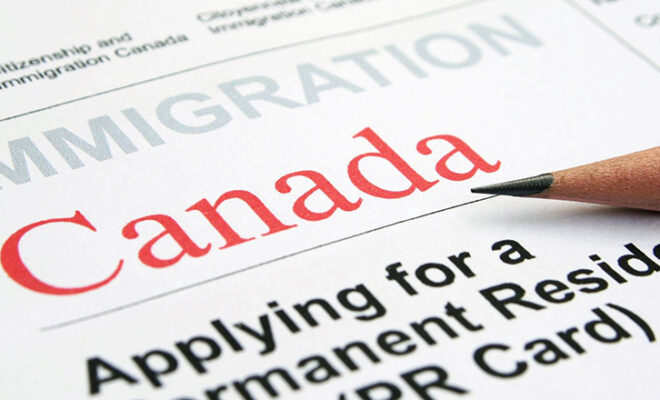10 Poorest Countries in Africa with the Worst System Education | In many parts of the planet, kids would give anything to take a seat during a classroom with a teacher who cares about their future, during a stable building with ample books and supplies. But due to various reasons war, poverty, and gender inequality — many kids round the world don’t get this opportunity. In fact, 61 million school-age children aren’t in class today.

The very fact is Access to quality schools may be a problem that’s felt the toughest in Africa. Nine out of 10 countries with the very best percentages of youngsters who’ve never attended any school were in Africa during the 2000s. And today, the ten lowest-ranked countries within the United Nations’ Human Development Report Education Index are African also. And also while recent years have seen the region’s school enrollments rise, serious challenges still face these poverty-plagued countries grappling with the way to provide access to education, keep kids in class , and foster learning. the image that these nations’ numbers paint isn’t attractive, but because the stories of those countries show, there’s always some improvement, help, and hope.
1. Niger
In Niger (as well as in Guinea) the stats are even worse for young women. In 2012, 70 percent of the poorest girls in those nations had never attended grade school. For those that went, it had been a significant financial struggle. School supplies and materials totaled up to almost 75 percent of the poorest household’s spending on education. it’s little wonder, then, that the amount of years Niger expects its students to finish is a smaller amount than six years.
-
Eritrea
Four years in class is all that folks in nation of 6 million within the Horn of Africa get to experience, on the average . The conflict-ridden country can’t contribute much, either: Eritrea spends just 2.1 percent of their GDP on education. Making matters worse, the 69 percent of primary school students who don’t drop out aren’t likely to urge much individual attention if they’re having trouble with a lesson. But Eritrea is making some progress: the teacher to student ratio is about 41:1 down from a former class size of 55.
-
Burkina Faso
The third worst country on the U.N.’s Education Index, this volatile West African country of nearly 19 million doesn’t expect that students will make it to eight years in class . The mean number of years Burkinabe spend within the classroom, after all, is a smaller amount than 1.5. Just 29 percent of adults are literate, and only 2 percent of citizens have any education in the least (The students-teacher ratio may be a dismal 46: 1). On the plus side, Burkina Faso has made improvements in reducing gender gaps in education, because of government policies and support. Last year, Michelle Obama and therefore the Peace Corp got involved, too, selecting the state together of 11 countries on which their “Let Girls Learn” initiative focuses, getting to champion women’s education. You go, girls!
-
Chad
By one estimate, a 3rd of Chad’s 14.5 million population will need humanitarian assistance this year, due partially to a refugee crisis that’s left little money or focus for education within the violence-riddled country in Northern Africa. the scholar to show er ratio may be a staggering 62:1 — and 35 percent of these primary-school educators aren’t even trained to teach. Perhaps not surprisingly, 49 percent of young students drop out. But the planet hasn’t turned a blind eye. In February, the worldwide Partnership for Education provided an emergency $6.95 million grant to the semi-desert country to support schools for refugees and returning Chadians short- and long-term. “Education,” reads a blog from the organization,“is life-saving…[It] can provide a way needed sense of normalcy for a toddler whose entire world has been turned the wrong way up .”
-
Guinea
“School fees often prevent children in developing countries from having the ability to travel to high school ,” consistent with UNICEF. Such could also be the case in Guinea, one among only 13 low- or middle-income nations to charge secondary-school fees. The West African country of 11.8 million enrolls just 38 percent of its secondary school-age population. (41 percent drop out at the first level). Guinea’s student-teacher ratio is best than a number of its neighbors at 44:1.
-
Sierra Leone
Sierra Leone, the land of “blood” diamonds, Ebola, and primary-school dropouts. Despite one hundred pc of the civil war-torn West African country’s primary school-age kids enrolling in class , a heartbreaking 52.2 percent drop out. (The mean number of years citizens spend in class , in fact, is just 3.1). Adults aren’t academic either. quite 84 percent haven’t any education and 56 percent are illiterate.
-
Mali
Getting a correct education in Mali might be considered a gamble: Primary-schoolers essentially have a 50/50 chance that their teacher is trained to show , since only 52 percent within the 18.2 million West African country are. And while the 41:1 student-teacher ratio might not sound sort of a good thing, it does represent progress in Mali — where the expected total years of schooling is eight. consistent with UNESCO, the country has “more than doubled their grade school enrollment while reducing their pupil/teacher [ratio] by…about 14 pupils per [teacher].”
-
Djibouti
Described by the planet Bank as “one of the poorest countries within the world,” the 828,000 citizens of teeny Djibouti (It’s smaller than the state of latest Jersey!) in Eastern Africa are only expected to be in class about six years. Teacher and textbook shortages also as crowded classrooms and dropouts have made educational progress tough. And though the planet Bank reports that, “Djibouti has made significant progress in raising grade school enrollment to around 60 percent of all school-age children,” they add that enrollment rates are lower, and dropout rates higher, for college kids living in rural areas also as girls.
-
Sudan
Sudan’s conflicts and humanitarian crises clearly aren’t conducive to amping up education, to not mention economic- and gender-equality. the planet Bank reveals that the 2010 “Sudan Household Health Survey shows that 53.4 percent of youngsters within the poorest households aren’t in class , compared to three .6 percent within the richest…with girls often facing a better risk of not completing their formal education.” The Northern African country of 36 million, it follows, pegs the mean number of years that citizens attend school to 3 .
-
Ethiopia
With so few literate adults (39 percent) and students in lyceum (29 percent) during this Eastern African country of 99 million, it could come as a surprise that the planet Bank reports that within the past 20 years, grade school enrollments have quadrupled. But here’s the rub: While the poorest children are enrolling in grade school , they’re also increasingly throwing in the towel at higher levels too. Call it, sadly, one breakthrough , two steps back.


